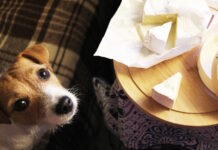Last Updated on September 28, 2024 by Dogs Vets
Introduction
Providing proper nutrition to your reptile pets is essential for their growth, health, and overall well-being. Reptiles have unique dietary needs that differ from other pets, and finding the best food sources can be a challenge. One feeder insect that stands out for its exceptional nutritional benefits is the Dubia roach.
In this article, we’ll dive deep into why Dubia roaches are one of the best choices for reptile nutrition and how https://topflightdubia.com/ ensures that your pets receive top-quality food.
What Are Dubia Roaches?
Dubia roaches (Blaptica dubia) are tropical cockroaches originating from Central and South America. Unlike the common household cockroach, these insects are clean, odorless, and do not fly. They grow to about 1.5 inches and are popular among reptile owners due to their excellent nutritional profile and ease of care. They are also slow-moving, making them easier for reptiles to catch and eat.
Nutritional Benefits of Dubia Roaches
One of the reasons Dubia roaches are considered a superior food source for reptiles is their impressive nutritional content. They are high in protein, with approximately 20-25% protein per roach. Additionally, they have a balanced calcium-to-phosphorus ratio, which is vital for reptile bone health. Dubia roaches are also low in fat, making them a healthier option compared to other feeder insects like superworms, which tend to be high in fat.
Dubia Roaches vs. Other Feeder Insects
When compared to other common feeder insects like crickets, mealworms, and super worms, Dubia roaches stand out in several ways:
- Crickets: While crickets are readily available and inexpensive, they have a higher fat content and a less balanced calcium-to-phosphorus ratio. Crickets are also noisy and can be messy.
- Mealworms: Although mealworms are easy to store, they have a hard outer shell made of chitin, which can be difficult for some reptiles to digest.
- Superworms: Superworms are large and fatty, making them less suitable for daily feeding. Dubia roaches, on the other hand, are lean and nutritious, making them a staple in many reptile diets.
How to Source High-Quality Dubia Roaches
Not all Dubia roaches are created equal. To ensure your reptiles are getting the best, it’s important to source from reputable suppliers like https://topflightdubia.com/ . A good supplier will offer roaches that are raised in clean, controlled environments and are free from pests and diseases. Look for roaches that are active, well-fed, and properly hydrated.
Feeding Guidelines for Reptiles
When feeding Dubia roaches to your reptiles, it’s essential to consider the species of reptile, its size, and its age. Typically, juvenile reptiles should be fed smaller roaches more frequently, while adult reptiles can eat larger roaches less often. As a general rule:
- Juveniles: Feed daily or every other day.
- Adults: Feed 2-3 times per week.
Always provide a variety of food to ensure your reptile receives a balanced diet.
Gut Loading and Hydration of Dubia Roaches
Gut loading is the process of feeding your Dubia roaches nutritious food 24-48 hours before feeding them to your reptiles. This ensures that your pets are getting the maximum nutrition from their meal. Offer your roaches fresh fruits, vegetables, and commercial gut-loading diets. Hydration is also crucial—provide water crystals or moisture-rich foods like carrots to keep the roaches hydrated.
Dubia Roaches for Specific Reptile Species
Dubia roaches are suitable for a wide range of reptiles. Here’s a quick guide:
- Bearded Dragons: Dubia roaches are an excellent staple feeder, offering high protein and low fat.
- Leopard Geckos: These reptiles benefit from the easy digestion and high nutrition of Dubia roaches.
- Chameleons: Dubia roaches provide a low-fat, protein-rich diet that supports their unique dietary needs.
Dubia Roaches as a Staple Diet
Dubia roaches can be a staple food for many reptiles due to their balanced nutritional profile. However, it’s important to offer variety by incorporating other feeder insects like hornworms or silkworms and plant-based foods depending on your reptile’s species.
Breeding Dubia Roaches at Home
Breeding Dubia roaches can save you money and provide a constant food source for your reptiles. A basic setup requires a bin, egg crates for hiding, and a heat source to maintain temperatures between 85°F and 95°F. Breeding your colony allows you to control the diet and health of the roaches.
Storing Dubia Roaches
Dubia roaches are relatively easy to store. For short-term storage, keep them in a well-ventilated container at room temperature. For long-term use, a slightly cooler environment can slow down their growth. Always ensure that they have enough food and water to remain healthy.
Preventing Pests and Parasites
To keep your Dubia roach colony healthy, maintain cleanliness by removing uneaten food and waste regularly. If you notice signs of mites or other pests, separate the affected roaches and thoroughly clean the enclosure.
Environmental Impact of Dubia Roaches
Raising Dubia roaches is not only beneficial for your reptiles but also has a lower environmental impact compared to other feeder insects. They require less space, food, and water to thrive, making them a sustainable choice for eco-conscious reptile owners.
Common Myths About Dubia Roaches
There are several misconceptions about Dubia roaches, such as the fear that they might infest homes or that they carry diseases. In reality, Dubia roaches cannot survive in most household environments and are raised in clean, controlled conditions.
Conclusion
Dubia roaches offer an ideal balance of protein, calcium, and low fat, making them one of the best choices for reptile nutrition. Whether you’re feeding bearded dragons, leopard geckos, or chameleons, you can trust that TopFlight Dubia provides high-quality, nutritious roaches that will keep your pets healthy and thriving.

















